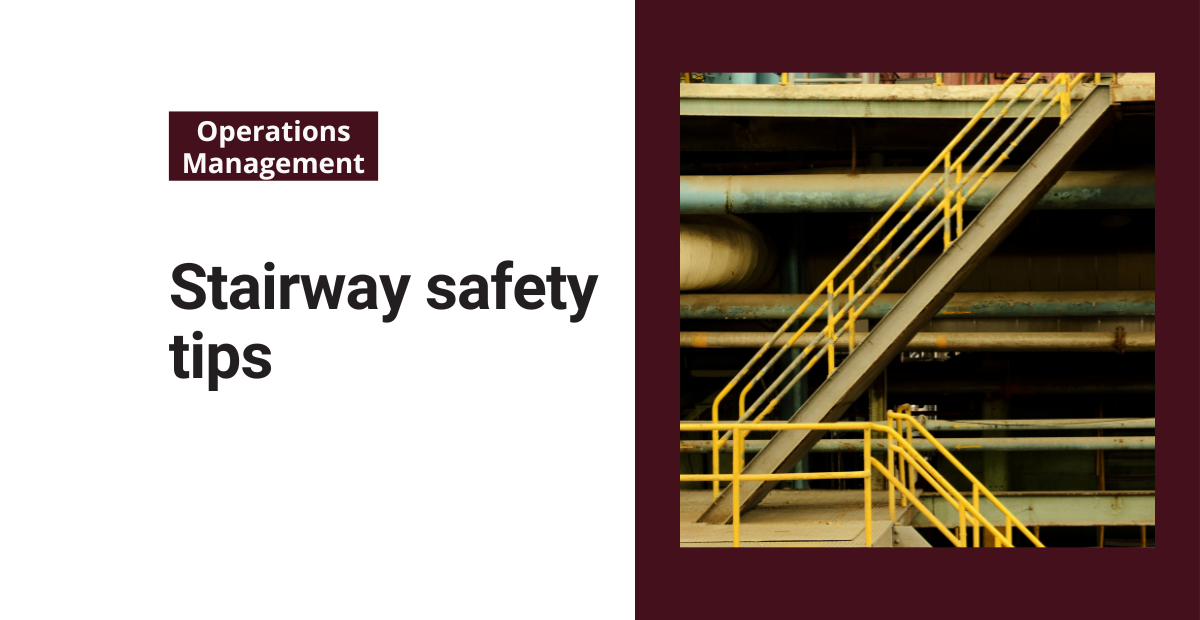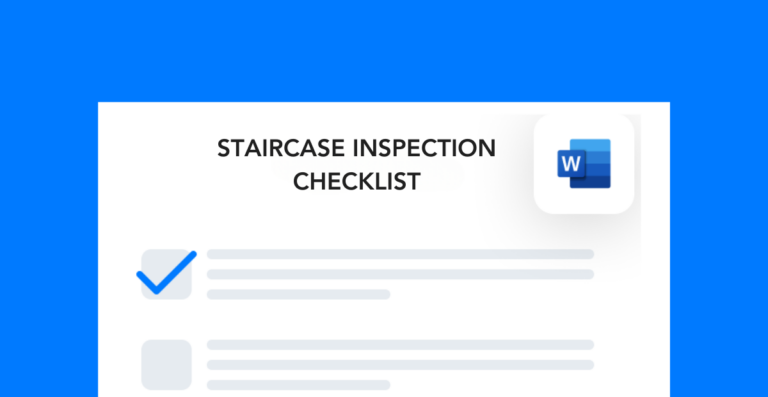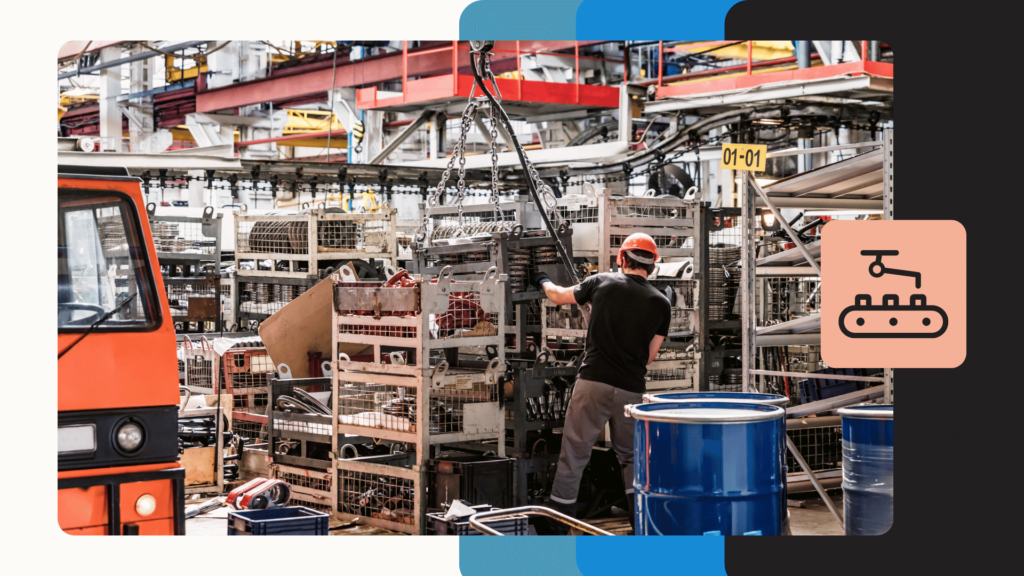Falls on staircases, steps, and curbs cause more than 20,000 injuries per year in the U.S. As an EHS professional, it might not always be easy to prevent these incidents. But regularly communicating stairway safety hazards is an effective way to promote good behaviors within your worksite.
Stairway safety tips for employees
Friendly reminders go a long way in keeping safety top of mind for your workers. These tips are great for morning standup meetings, posters, and other forms of safety communication.
- Use handrails when walking on the staircase.
- Always walk facing forward, never backwards.
- Avoid loitering on staircase landings.
- Stick to the right-hand side of the staircase.
- When carrying objects on the stairs, keep them as close to your body as possible.
- Always keep a line of sight, making sure not to carry items in front of your face.
- Walk single file if there are two directions of traffic on the staircase.
- Walk, never run, while going up or down the stairs.
- If you spill anything on the staircase, clean it up right away.
- Wear appropriate footwear and always tie your shoelaces before ascending the stairs.
Ways to prevent incidents
There are many things you can do to prevent staircase injuries. Enforcing simple behavioral policies and creating safe workspaces are two great examples of how to do this.If you need help getting started or need some inspiration, here are a few tips to help you create and maintain safe staircases throughout your site.
- Perform a weekly inspection of all staircases.
- Keep stairways clear of clutter.
- On rainy days, always place nonslip mats at the foot of the stairs.
- Tightly secure all stair treads to prevent trip hazards.
- Never use the staircase as a place to store equipment.
- Repaint chipped sections of the handrail each year.
- Consider widening staircases that are prone to congestion.
- Block off staircases to dangerous work areas.
- Incorporate stair safety rules in your site’s code of conduct.
- Add the staircases to your weekly cleaning schedule to protect against grime buildup.
The goal is to make it as easy as possible for workers to practice safe behaviors. Sometimes, this means upgrading your staircases so they’re safer, even if it costs more time and money.
Reporting stairway safety hazards
A key component of your stairway safety program should be hazard reporting. Set up a reporting system that allows your EHS team to respond to reports quickly. The best way to do this is digitally with either a form or an email inbox.
When someone reports a stair hazard, your team will get notified right away. Once you investigate the report, you can implement a solution that either controls or eliminates the issue altogether. Not only is this great for addressing hazards in real time, but it also encourages a proactive safety approach. Long-term, that will help improve your site’s safety culture and get your employees more involved in the success of the EHS department.




